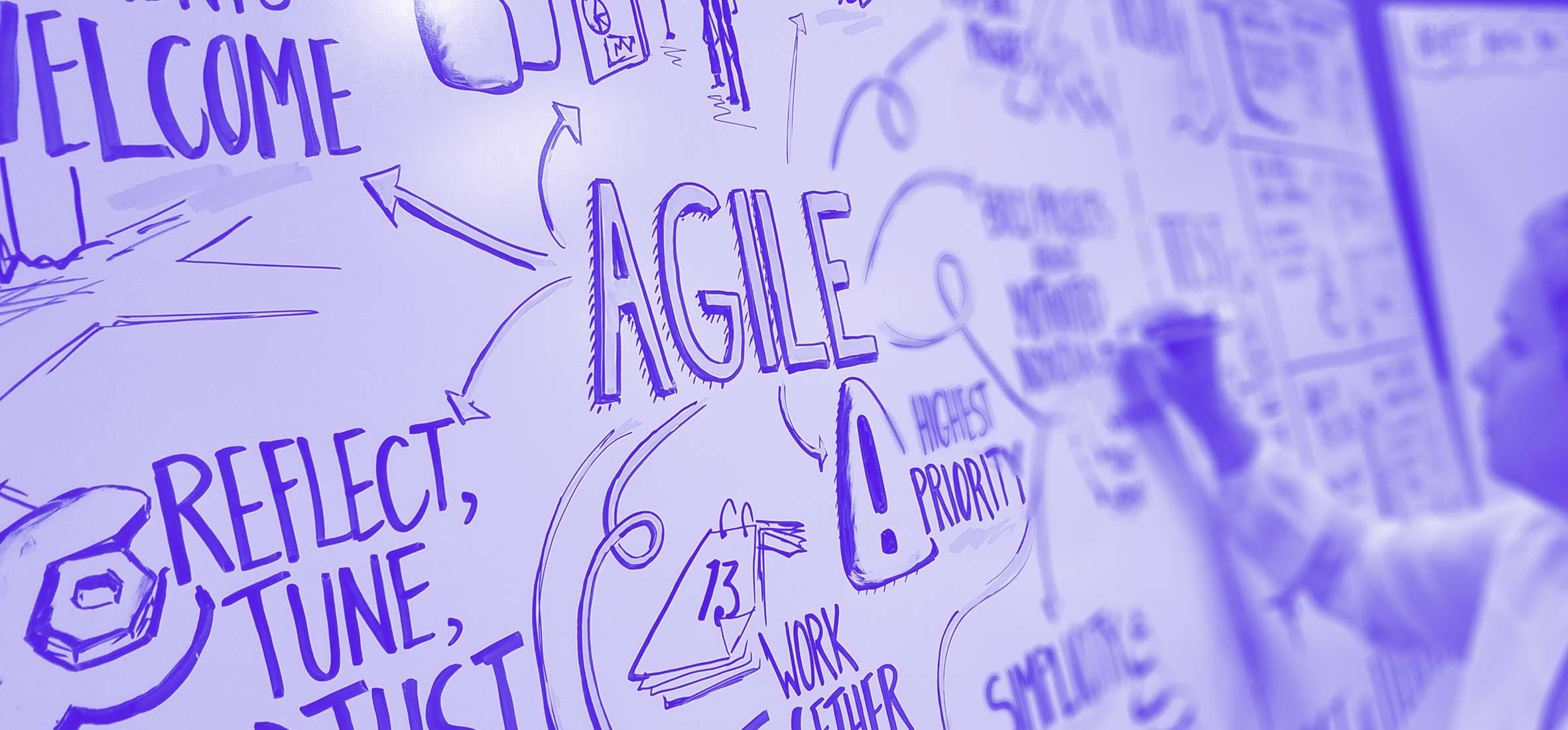
Last week, Bridge Partners and 8works co-hosted our second Solution Exchange Series Lab. Our theme for this lab was Succeeding with Digital Transformation: Creating Business Value and Driving Sustainable Revenue. Business leaders from some of the top companies in the Seattle area came together and formed three working groups to discuss the challenges and opportunities that come with digital transformation.
I had the privilege of facilitating one of these sessions, Learning to Fail Fast and Iterate: The Secret Sauce of Dealing with Digital Disruption. As a marketer who admires continual improvement techniques, I was excited to join this discussion. I kicked off the conversation by sharing a few Agile principles I’ve used to drive customer engagements. This helped set the context for the rest of our session and allowed us to gain a common understanding of the topic. From there, we collectively identified a small subset of guiding principles to keep our conversation focused on delivering successful projects for our companies:
- Reduce complex projects into simple, consumable, and attainable chunks
- Keep outcomes focused on the customer
- Communicate and work together daily toward a common goal
This discussion led to some insights about the many challenges the group faces within their organizations and centered on just what it means to ‘Fail Fast.’ For me, ‘Fail Fast’ is less about failure in general and more about the process of experimenting and learning. The faster I can learn, the better the outcome.
With the context set, it didn’t take long for the group to focus on a single question: ‘What are the top barriers to using Agile?’ By design, our lab session was interactive and hands-on. While one person was white boarding and capturing ideas, we all brainstormed and debated. Everyone was an active participant, which was exciting. For a group that just met professionally and personally, it was a highly engaging experience. As our white board filled with answers, ideas, and more questions, some consistent themes emerged that indicated we all faced similar challenges in our workplaces. While everyone was eager to try Agile, many felt the barriers to organization-wide adoption were substantial. The barriers we identified were:
- The “We’ve always done it this way” syndrome
- Ego struggles
- Lack of definitions of success
- Undefined roles and responsibilities
- Absence of measurable data and tools
Admittedly, I’ve only shared the short list, but it captures the essence of our discussion. How familiar are these barriers to you and your organization? I can imagine you’ve likely encountered some, if not all, of these barriers at one point or another. But how do we overcome them and how do we better position our teams for success? To answer this, our group returned to the whiteboard to help identify a few possible elements of success. Here were the key takeaways:
- Build trust. Whether top-down or bottom-up, people and teams need to actively create environments of trust to more effectively work together.
- Clearly define the problem. Clearly defining and prioritizing the problems that need to be solved helps keep everyone focused and less distracted by shiny objects.
- Set explicit role and ownership boundaries. Effective teams and projects need clear role definition to understand how each person contributes to the overall success as well as clear leadership to help guide the vision.
- Define both success and failure. If you don’t know where you’re going, how will you know when you arrive?
If you don’t know where you’re going, how will you know when you arrive?
- Test and measure outcomes. Take the time early in a project to define not only how to test and measure, but how to collect data. Most projects don’t need a large research project to get customer feedback to inform whether a project is on track or not.
- Include the customer. We all have customers and relationships with people that can provide perspective. Develop ways to integrate this perspective into your every day.
- Reward teams for failing. Failing fast is just another way of learning. It’s a mode of learning that needs to be supported, recognized publicly, and identified when it happens.
The day ended quickly, but we were eager to take our arsenal of shared ideas back to our companies to experiment. It was an exciting day and a lot of fun to collaborate with great leaders and thinkers. I’m looking forward to learning how all our participants move ahead with these ideas and drive digital transformation in their organizations.
What about you? Are you a leader of teams, projects, or people? What are the top barriers you face to improving results and working more effectively? I’d love to hear from you.
